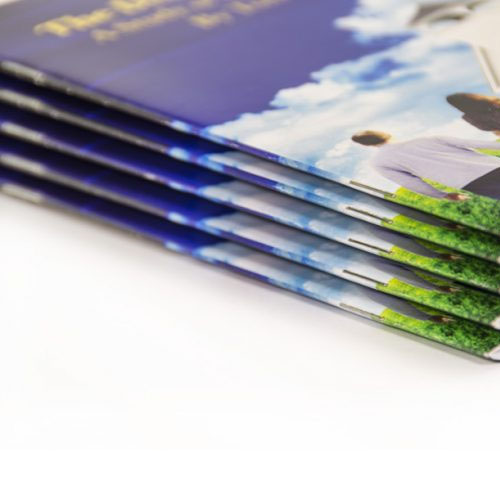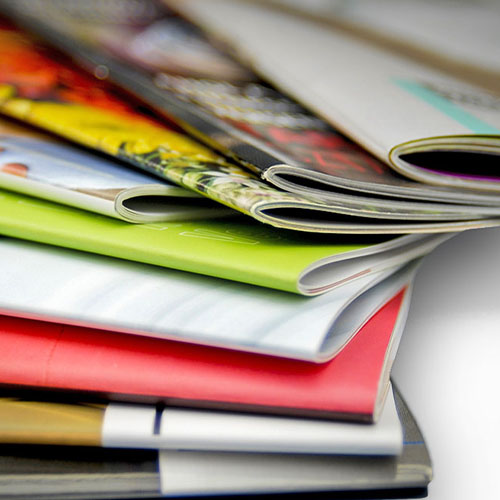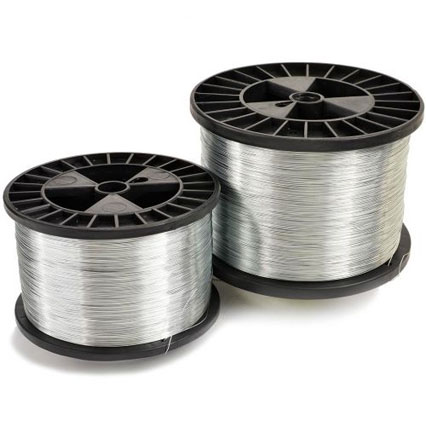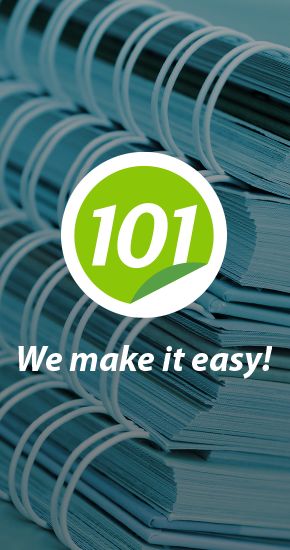In the bindery and print finishing industry, saddle stitching refers to a popular bookbinding method that involves gathering a stack of folded sheets together and sewing a metal wire into the spine to hold them together. The finished result looks like a staple, however, is actually drawing, cut, and cinched from a spool of stitching wire, which is ideal for high volume.
Saddle stitching machines come in several configurations. The first is a single-head stitcher which (yep, you guessed it) uses a singular stitching head to bind. Pages are moved across the saddle of the machine to achieve multiple stitches for a single booklet. We also offer double-head stitchers, which have two heads on one machine that will stitch simultaneously, doubling how quickly you can accomplish a booklet. And the third option is a multi-head stitcher, which is a bit more customizable by offering the ability to add as many as five stitch heads onto one machine.
Featured Stitcher: DeLuxe StitchMaster
This stitching machine is a high-performance saddle stitching system that offers extremely quiet, fast, and dependable operation for small print shop volumes. This powerhouse stitcher can accomplish as many as 100 stitches per minute, so you can keep your jobs moving quickly and efficiently. It is easy to use with convenient one-knob adjustment for the document thickness and leg adjustments; something unique to only a few systems.
Choose from a single-head or double-head option, as well as an optional stand accessory.
Best Saddle Stitcher Brands
We offer a wide assortment of high-quality saddle stitchers from some of the best brands in the finishing industry, most notably, Deluxe Stitcher. We carry only top-quality, best-in-class saddle stitching machines that can handle the volume of magazines while maintaining the precision you require for thin newsletters or programs. With these premium quality machines from the best brands in the biz, you can rest easy with fewer jams and hassling with loading and setup from job to job.


Today, the DeLuxe Stitcher Company Inc., located in Chicago, Illinois USA, manufactures a wide range of free-standing stitcher machines, stitcher heads and replacement component parts for nearly all makes and models of stitcher machines and heads. With more than 120 years of stitching experience, DeLuxe Stitcher and its vast array of local dealers are ready to meet your stitching needs. And with their various acquisitions, the resulting portfolio includes high-quality products for nearly every type of wire stitching application.
In 2010, Deluxe Stitcher added to its product range and global reach with the acquisition of ISP Stitching and Bindery Products.
In 1996, DeLuxe Stitcher Company acquired the Graphic Arts division of Stanley/Bostitch combining DeLuxe's history of customer responsiveness and consistent reliability with Bostitch's diverse product range.
Saddle Stitching Tips, Tricks, & Considerations
- CREEP - Before you stitch, think about "creep". Creep is created because pages are placed inside one another, which causes the edges of the inside pages to stick out past the outside pages. The more pages that are in your document, the more creep you will experience. This natural occurrence is easily corrected with a finishing trimmer, but remember to keep the creep in-mind when you are printing your pages so the text alignment looks clean after trimming. Consider our top-quality cutters for your professional finishing needs.
- CAPACITY - Before you settle on saddle stitching for your binding solution, consider the fact that stitching is typically used for thinner booklets ranging from a couple to only about 64 pages. If you want the ability to bind thicker documents now or in the future, it may be a smarter investment to consider one of our various other document binding solutions instead.
- FINISHING - Investing in a proper stack cutter to finish the edges of your booklet will be the finishing step to have a professional finish.
The Saddle Stitching Process
The specific stitching process will always vary from machine-to-machine, so you should always reference your specific system's instruction manual before running the machine. With that in mind, we can overview the saddle stitching process in a general manner.
To help illustrate this bindery process, we will imagine using a letter size 8.5" x 11" finished page size booklet. This means that the booklet sheets would actually be doubled the width at 17" x 11". Once folded, each sheet would be nested inside each other and stitched along the folded edge/spine. Each master sheet will actually create 4 total pages in your booklet, and the printing will need to be produced with the nesting of signatures (another word for the folded sheets) and order of pages in-mind. By the standard nature of saddle stitching, book page count also needs to be in increments of four. And, because of the natural creep of the pages once they are folded and inset, you should ensure there is plenty of margin space on the edges of your booklet to allow for trimming and alignment. Ensure that this is at the forefront of your mind when you are formatting and laying out your book to avoid unplanned blank pages.
The first step is to format and print your pages with all of that information in mind, Once that is done, the pages need to be pre-folded down the center and nested together in the proper page order. Once your machine is set up with the proper stitching wire spool installed and the proper settings prepped for your booklet, place your folded stack onto the saddle naturally and position it with the stitching head. activate your stitcher and, if using a single-head, move the page down and activate as many times as necessary to add as many stitches as you would like for your spine. Once the booklet is done, it should move onto a finishing step to trim the edges and eliminate the natural creep/offset of the pages. That's it! The process is really quite simple and, after the initial machine investment, is quite affordable when you look at the per-book cost.

















